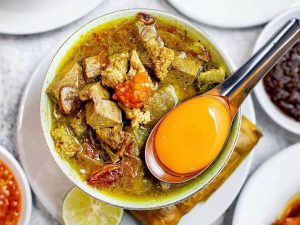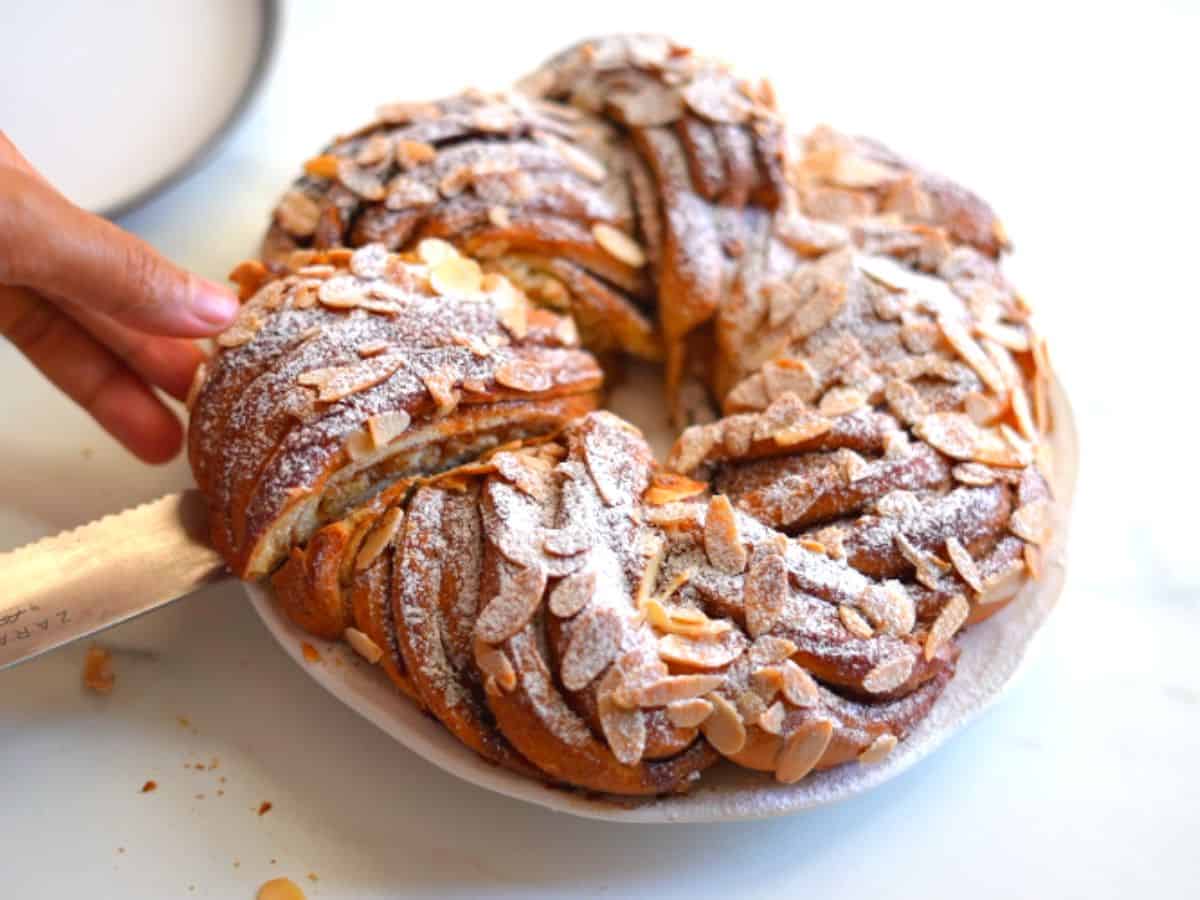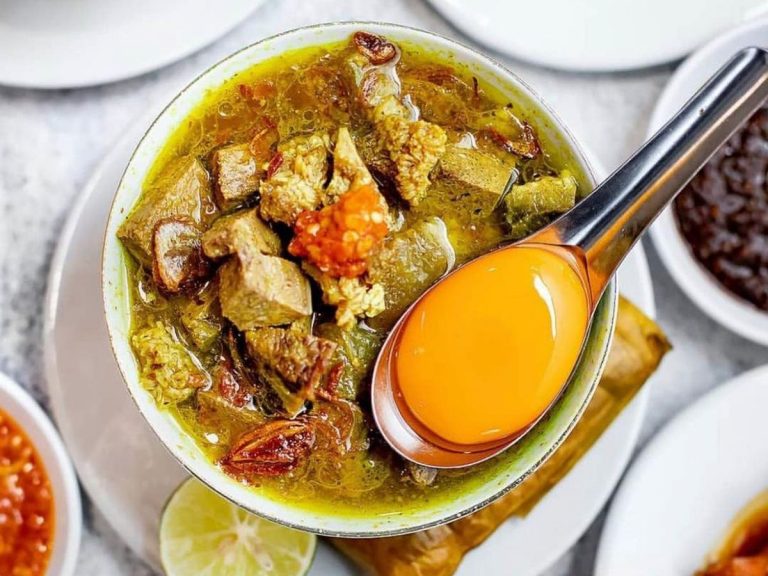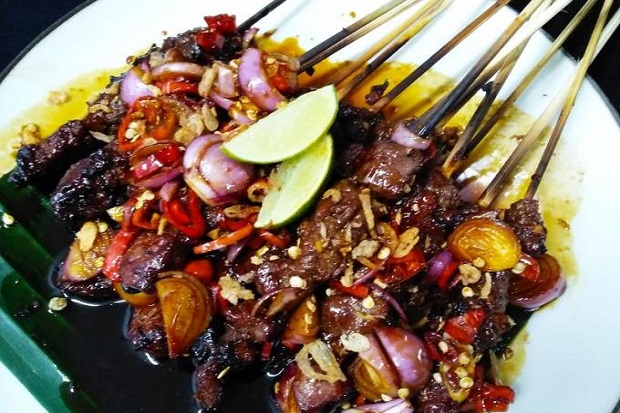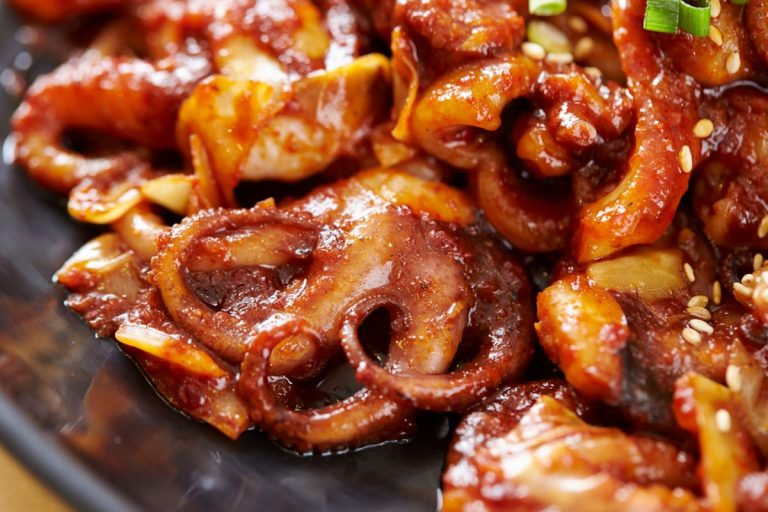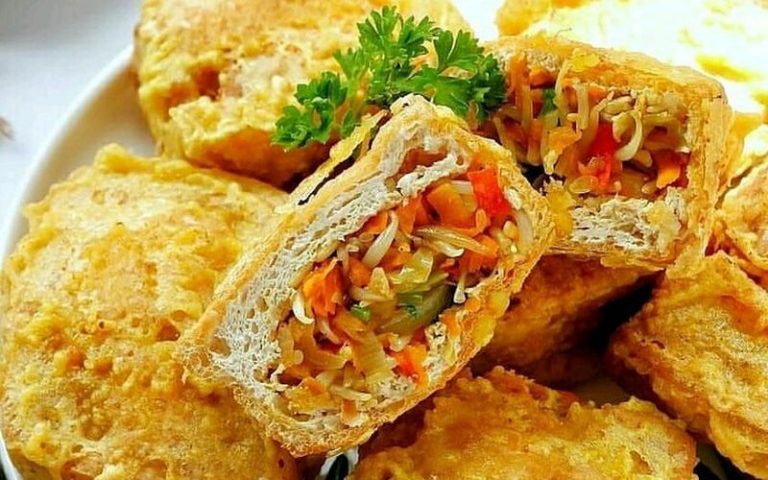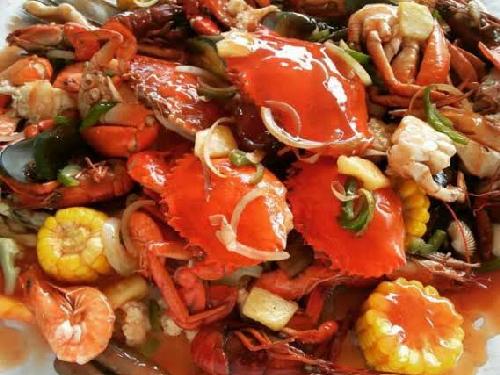The first time I tasted Estonian kringel was during a winter trip to Tallinn about 12 years ago. I had ducked into a small bakery to escape the bone-chilling Baltic wind, and the sweet, cinnamon-laced aroma immediately enveloped me. The baker proudly pointed to an elaborate braided bread shaped like a pretzel and said, “Kringel – you must try!” One bite of that cardamom-scented, almond-topped perfection, and I was hooked.
What is Estonian Kringel?

Kringel (pronounced “kring-el”) is a traditional Estonian sweet bread formed in a decorative pretzel or B-shape. It’s made from an enriched yeast dough with butter, eggs, and milk, then filled with a mixture typically containing cinnamon, sugar, raisins, and sometimes nuts. The bread is braided to create its distinctive appearance, brushed with egg wash for a golden shine, and often topped with sliced almonds and pearl sugar.
This festive bread isn’t just delicious – it’s deeply woven into Estonian culture and traditions. According to Estonian food history (nofollow), variations of kringel have been enjoyed at celebrations for centuries across Northern Europe, with each region developing its own special version.
My Disastrous First Attempt
After returning home from culinary Estonia, I was determined to recreate that magical kringel experience in my own kitchen. Let’s just say… it didn’t go as planned.
I found a recipe online that seemed straightforward enough. I gathered all the ingredients and confidently set to work one Sunday afternoon, promising my family a special treat.
The first challenge came with the yeast. I’d stored it improperly, and it was basically dead – but I didn’t realize that until my dough refused to rise after two hours of sitting. I ran to the store for fresh yeast and started over.
The second batch of dough seemed promising, but I completely underestimated how messy the braiding process would be. The filling oozed everywhere, my kitchen counters looked like a cinnamon war zone, and my attempts at creating that elegant twisted shape resulted in something that looked more like a sad, lumpy snake than the beautiful pretzel shape I remembered.
When I finally put my creation in the oven, I got distracted by a phone call and forgot to set a timer. The smell of burning sugar snapped me back to reality – my poor kringel was charred on top and still doughy in the middle.
My family was kind, nibbling at the edible parts and assuring me it “had potential,” but I knew I had a long way to go before mastering this Estonian delicacy.
The Secret to Perfect Kringel Dough
After my initial failure, I spent months experimenting and learning. The most important lesson? Respect the dough.
The key to excellent kringel is a properly enriched dough that’s given enough time to develop. Here’s what I’ve learned:
- Temperature matters: All ingredients should be at room temperature before mixing, especially butter and eggs. Cold ingredients prevent proper incorporation and development of the dough.
- Patience with proofing: Unlike regular bread, enriched doughs with butter, eggs, and sugar need more time to rise. Don’t rush this step!
- Cardamom is essential: While cinnamon gets more attention in many recipes, the subtle, aromatic cardamom is what gives authentic Estonian kringel its distinctive flavor.
- Proper kneading technique: The dough should be kneaded until smooth and elastic, but not over-kneaded, which can make it tough.
After much practice (and several more not-quite-right attempts), I finally developed a foolproof method that consistently produces a kringel worthy of an Estonian bakery.
Traditional vs. Modern Fillings
While the classic Estonian kringel typically contains a cinnamon-sugar mixture with raisins, there are countless variations both traditional and modern.
In Estonia, you’ll find regional variations that might include:
- Cardamom-sugar (more common in northern Estonia)
- Saffron and raisin (showing Swedish influence)
- Poppy seed and honey
- Candied fruit (especially for holiday versions)
In my own kitchen, I’ve experimented with some less traditional but equally delicious fillings:
- Chocolate and orange zest
- Almond paste with dried cranberries
- Apple and caramel
- Cream cheese with lemon and blueberry
My personal favorite remains fairly traditional: a cardamom-scented dough filled with cinnamon-sugar, raisins soaked in rum, and chopped almonds. The rum is definitely my own addition, but I find it adds a wonderful depth of flavor that complements the spices beautifully.
My Reliable Estonian Kringel Recipe
After many trials and errors, here’s the recipe I’ve perfected:
Dough:
- 4 cups all-purpose flour
- 1/4 cup sugar
- 1 teaspoon salt
- 2 teaspoons ground cardamom
- 2 1/4 teaspoons active dry yeast (1 packet)
- 3/4 cup warm milk
- 2 eggs, room temperature
- 1/2 cup butter, softened
- 1 teaspoon vanilla extract
The filling:
- 1/2 cup butter, softened
- 3/4 cup brown sugar
- 2 tablespoons ground cinnamon
- 1/2 teaspoon ground cardamom
- 1/2 cup raisins (soaked in 2 tablespoons rum, optional)
- 1/2 cup chopped almonds
For topping:
- 1 egg, beaten (for egg wash)
- 1/4 cup sliced almonds
- 2 tablespoons pearl sugar (or coarse sugar)
Instructions:
- Combine warm milk and 1 ts sugar, sprinkle yeast, and let sit for 10 minutes until foamy.
- In a large bowl, mix flour, remaining sugar, salt, and cardamom.
- Add yeast mixture, eggs, butter, and vanilla to the flour mixture. Mix until a soft dough forms.
- Knead on a lightly floured surface for about 8-10 minutes until smooth and elastic.
- Place in a greased bowl, cover, and let rise in a warm place for 1-1.5 hours until doubled.
- Meanwhile, mix filling ingredients (except raisins and nuts) until smooth.
- Punch down dough and roll into a rectangle about 16×24 inches.
- Spread filling evenly over dough, leaving a 1-inch border. Sprinkle with soaked raisins and nuts.
- Starting from the long edge, roll the dough tightly into a log. Place seam-side down.
- With a sharp knife, cut the log lengthwise, leaving one end intact.
- Twist the two halves around each other, keeping the cut sides facing up to expose the filling. Form into a pretzel or B shape.
- Transfer to a parchment-lined baking sheet, cover, and let rise for 30-40 minutes.
- Preheat oven to 350°F (175°C).
- Brush with beaten egg and sprinkle with sliced almonds and pearl sugar.
- Bake for 30-35 minutes until golden brown. Cover with foil if it browns too quickly.
- Cool on a wire rack before slicing.
Why Kringel Is Perfect for Special Occasions
In Estonia, kringel is traditionally served at celebrations like birthdays, weddings, and holidays. There’s something inherently festive about its elaborate braided shape that makes it perfect for special occasions.
I’ve adopted this tradition in my own home, and kringel has become my go-to contribution for family gatherings. The beauty of bringing kringel to a party is that it serves both as a stunning centerpiece and a delicious treat.
For my sister’s baby shower last year, I made a cinnamon-cardamom kringel and decorated it with blue pearl sugar. It was the first thing to disappear from the dessert table, and I received more compliments on that than on the elaborate (and much more time-consuming) cake I also baked!
Kringel’s Cousins Around the World
What I find fascinating about kringel is how similar breads appear across Northern Europe, each with their own regional twist:
- In Finland, they have korvapuusti (cinnamon rolls) and pulla (cardamom bread)
- Sweden has kanelbullar (cinnamon buns) and their own version of kringla
- Denmark is famous for wienerbrød (Danish pastry)
- In Germany, there’s hefezopf (braided bread)
- Russian and Ukrainian kulitch is a distant relative
This shared baking tradition speaks to the connected history of these Baltic and Nordic countries, with recipes evolving as they crossed borders through trade, migration, and changing political boundaries.
Conclusion: Why Kringel Is Worth Mastering
Learning to make Estonian kringel has been more than just adding another recipe to my repertoire – it’s been a journey of connecting with another culture through food. Every time I braid that dough, I’m participating in a tradition that has brought joy to Estonian families for generations.
Yes, it takes practice to master the technique. Yes, there will likely be a few mishaps along the way (my family still teases me about the “charcoal kringel incident”). But the moment you pull a perfectly golden, fragrant kringel from your oven and share it with people you love, you’ll understand why this bread holds such a special place in Estonian celebrations.
Whether you’re exploring your own Estonian heritage or simply love discovering authentic international baking traditions, I encourage you to try making kringel. Its impressive appearance belies how approachable it really is once you understand the basics.
And if your first attempt doesn’t turn out perfectly? Well, even a slightly misshapen kringel still tastes delicious with a cup of coffee – and you’ll have a good story to tell about your baking adventure!



